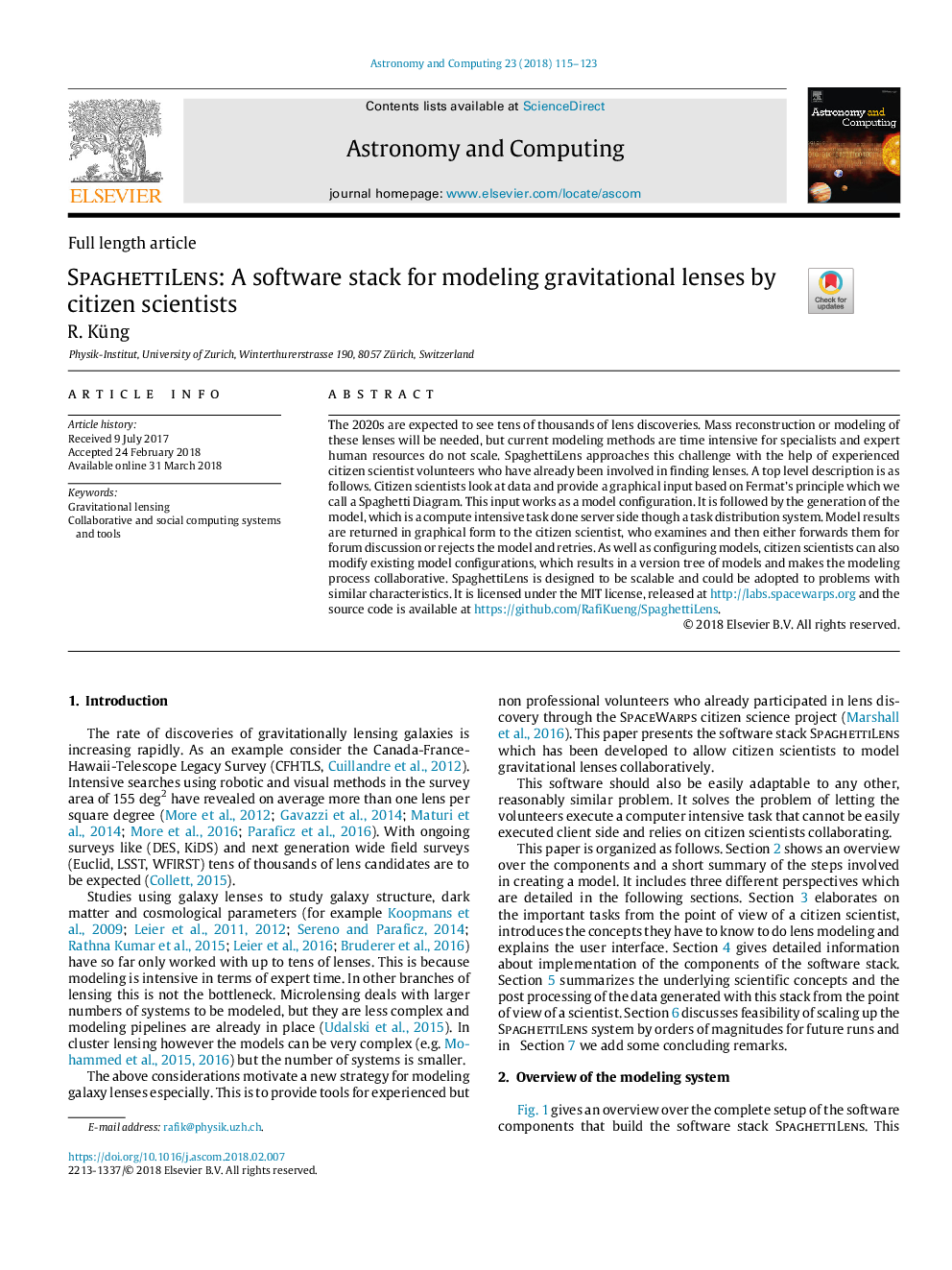| Article ID | Journal | Published Year | Pages | File Type |
|---|---|---|---|---|
| 6905997 | Astronomy and Computing | 2018 | 9 Pages |
Abstract
The 2020s are expected to see tens of thousands of lens discoveries. Mass reconstruction or modeling of these lenses will be needed, but current modeling methods are time intensive for specialists and expert human resources do not scale. SpaghettiLens approaches this challenge with the help of experienced citizen scientist volunteers who have already been involved in finding lenses. A top level description is as follows. Citizen scientists look at data and provide a graphical input based on Fermat's principle which we call a Spaghetti Diagram. This input works as a model configuration. It is followed by the generation of the model, which is a compute intensive task done server side though a task distribution system. Model results are returned in graphical form to the citizen scientist, who examines and then either forwards them for forum discussion or rejects the model and retries. As well as configuring models, citizen scientists can also modify existing model configurations, which results in a version tree of models and makes the modeling process collaborative. SpaghettiLens is designed to be scalable and could be adopted to problems with similar characteristics. It is licensed under the MIT license, released at http://labs.spacewarps.org and the source code is available at https://github.com/RafiKueng/SpaghettiLens.
Keywords
Related Topics
Physical Sciences and Engineering
Computer Science
Computer Science Applications
Authors
R. Küng,
